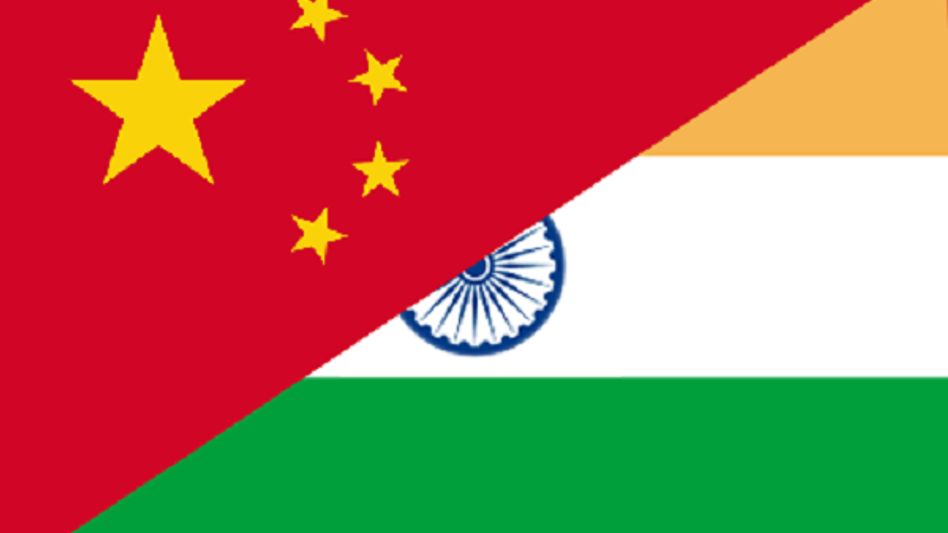An Assessment on Sino- India Trade & Economic Relations post Corona
 Representative Image
Representative ImageAbhinav Sankar Goswami: The year 2020 marks the 70th anniversary of diplomatic ties of India and People’s Republic of China. The latter was established on 1st April 1950. However, with COVID 19 pandemic worldwide celebratory events had to be cancelled for the aforementioned occasion. The President and the Premier on both sides exchanged congratulatory messages and have made the expected euphoric statements about the two workings together to “bring more benefits to the two countries and peoples and contribute more positive energy to Asia as well as the world.” It is crystal clear at this stroke of the hour that there will be a significant change in global politics post- Coronavirus pandemic. Amidst the suspicions and assumptions, India’s foreign policy needs a visionary strategy to deal with our powerful bordering neighbour at present and in the future.
The strength of Sino-India bond
India is faced with a key strategic choice—does India want to be co-opted into the existing international structures that have been fashioned by and are dominated by the West in general and the US in particular, or does India see itself as one of the ‘poles’ in a multi-polar world? (Sikri, 2013) Along those lines, post-independent India who led Non-Aligned Movement during the cold war era and as a nuclear state and rising economic giant in contemporary times certainly shows ambitions to be one of the ‘poles’ in leading a multi-polar world. In the geopolitically crucial Eurasian space, India, China and Russia are the only three countries outside the US-led alliance systems that can even aspire, that too only collectively, to craft a new global balance of power. (Sikri, 2013) India as a major player in global politics cannot afford a second to overlook its relations and influence over its neighbour. In short, what India does with the West is perhaps not more important than what India manages to achieve in its own neighbourhood. In order to emerge as a credible power centre, it has to build and sustain its prevailing sphere of influence in the region of South Asia. Further, to drive towards this objective with a sustainable nature needs a narrowing of existing gaps with China. A sustainable form of healthy bilateral relations can exist if there is maximum possible economic integration with the bordering nations. Economic interdependence with the potential of economic integration leads to neighbours having a better appreciation of India’s security concerns. Additionally, it reduces the possibility of unfavourable bilateral relations with the change of leadership in China.
How relations shifted: History to the Present
In contemporary times, India and China are Asia's two largest and most dynamic economies which are emerging as trendsetters in international relations. However, if we look back in history the times were hostile post-Sino-India war in 1962. The bilateral relations between India and China was restored in 1976 and strengthened in the 1980s. The process of dialogue initiated by the governments of the two countries at that point of time was quite helpful in identifying the common trade interests. Efforts were initiated to make the most of their economic strengths so as to improve the economic and trade relations between India and China. In the year 1984, India and China entered into a Trade Agreement, which provided them with the status of Most Favored Nation (MFN). It was in 1992 that India and China got involved in a full-fledged bilateral trade relation. The year 1994 marked the beginning of a new era in the Sino- India economic relations. In this year a double Taxation Agreement was signed between the governments of the two countries. The government of both countries also took the necessary initiative to turn into dialogue partners in the Association of Southeast Asian Nations (ASEAN). In 2003, the Bangkok Agreement was signed between the two countries. Under this agreement, both India and China offered some trade preferences to each other. India provided preferences on tariff for 217 products export from India. In 2003, India and China entered into an agreement to initiate open border trade via the Silk Route.
The two countries have also shown interest to take part in a multilateral trade system as per the WTO commitments. China has already been the top trading partner of India in recent times. The economic relationship between the two countries is considered to be one of the most significant bilateral relations in the contemporary global economic scenario and this trend is expected to continue in the years to come. Today, China is India’s largest trading partner; whereas India is within the top ten of China’s trading partners.
The Contemporary Times
India and China are one of the fastest-growing nations which hold the potential to propel the future global economy with a pool of the world’s largest skilled workforce in service and manufacturing industries respectively. The bilateral trade between India and China has grown four-fold in the last decades. However, China enjoys a favourable balance of trade in comparison to India. It is noteworthy that India- China trade has remained to be China’s most balanced of trade in South Asia. The bilateral trade between both the nations touched $87.1 billion in the fiscal year 2019, accounting for a trade deficit of $53.6 billion for India which has grown thirty-seven times in the last twenty years. It needs to be highlighted that India is the 7th largest export destination for Chinese products and is likely to be amongst the fastest-growing destinations. It is noteworthy that a looming trade deficit for India from $9.2 billion in the fiscal year 2007 to $53.6 billion in the year 2019 is the point of dissidence for over a decade in every China- India dialogue.
How can India and China reach favourable trade accounts for both nations?
If China allows greater market access for Indian products in the sectors of pharmaceuticals, Agri- commodities, and movies. Today, India holds a critical and alternative market opportunity for Chinese companies, several of which are affected by the levy of heft duties on US export consignments. India is one of the most attractive destinations for global FDI who have consistently managed to win the title of “Best Global Location for Greenfield FDI”. Even though China is relatively a late entrant compared with its Asian neighbours like Japan and South Korea in India as far as FDI in man acting and services sectors are concerned. However, the momentum has built since 2014 which took an escape post-Modi-Xi Informal Summit in Wuhan in 2018. There are roughly 800 Chinese companies in India with roughly 75 manufacturing facilities across different sectors such as smartphones, consumer appliances, construction equipment, power equipment, automobiles, etc.
Further, it needs to be stated that unlike in most other countries Chinese capital has been welcomed with on arms by the Indian Start-up ecosystem. As per data from Traxcn, China’s venture capital investments in India grew 5x to $5.6 billion in 2018 compared to $3 billion in 2017 and $668 million in 2016. Chinese investors such as Alibaba, Tencent, Meituan, Didi, Shunwei Capital, NGP Capital have investments in B2B and B2C e-commerce, payments, mobility, education, food delivery, logistics, and fintech. Additionally, in recent years India has become the valuation driver for Chinese Internet firms. Content sharing platforms such as Shareit has 200 million monthly active users in India and nearly 400 million installed users. Tik Tok app (owned by Bytedance) is the new favourite with 120 million active users monthly in less than three years of its operations. Other platforms such as NewsDog, Live.me, Musicly.ly are investing in growth in regional content to tap new content consumers in Tier II and Tier III cities in India rather than concentrating on English speaking populace in metros.
What might be the future prospects in Sino- India relations?
In terms of pure economic gains, Sino- India relationship can confer significant gains upon both nations with China’s vast size, it’s expanding middle class offers great potential as a future market for Indian goods and services as well as a source of greater investments. But challenges such as trade imbalance, market access issues and a restrictive regulatory environment need to be addressed. Further, geopolitical circumstances will continue to set India against China which would come in the middle of economic opportunities for New Delhi. Apart from the opportunities, there are concerns that need clear highlights. The current pandemic has made us look at how China runs its trade. One of the significant realizations is that the world is dependent on China for raw materials and controls 70% of the global raw material supply. For instance, India’s pharma industry which employs 27 lakh people and generates $11 billion trade surplus is heavily dependent on China for APIs, the basic raw material for pharma products. If an uncontrollable pandemic is in play, it will lead to the death of an entire industry.
While the future is blessed with enough prospects for two Asian giants to lead the world in the 21st century, New Delhi also has to take note of every concern to make the relationship even. Hope, the aftermath of the Great Lockdown is a portal of solidarity between Sino-India and echo the slogan of “Hindi-Chini Bhai Bhai”.
Abhinav S. Goswami pursuing Social Sciences (Bachelors) at Tata Institute of Social Sciences, Guwahati. He is associated with Entrepreneurial Terrain, a consulting agency based in Guwahati.
Readers like you make Inside Northeast’s work possible.
To support our brand of fearless and investigative journalism, support us HERE.
Download:
The Inside Northeast app HERE for News, Views, and Reviews from Northeast India.
Do keep following us for news on-the-go. We deliver the Northeast.
Copyright©2025 Living Media India Limited. For reprint rights: Syndications Today









